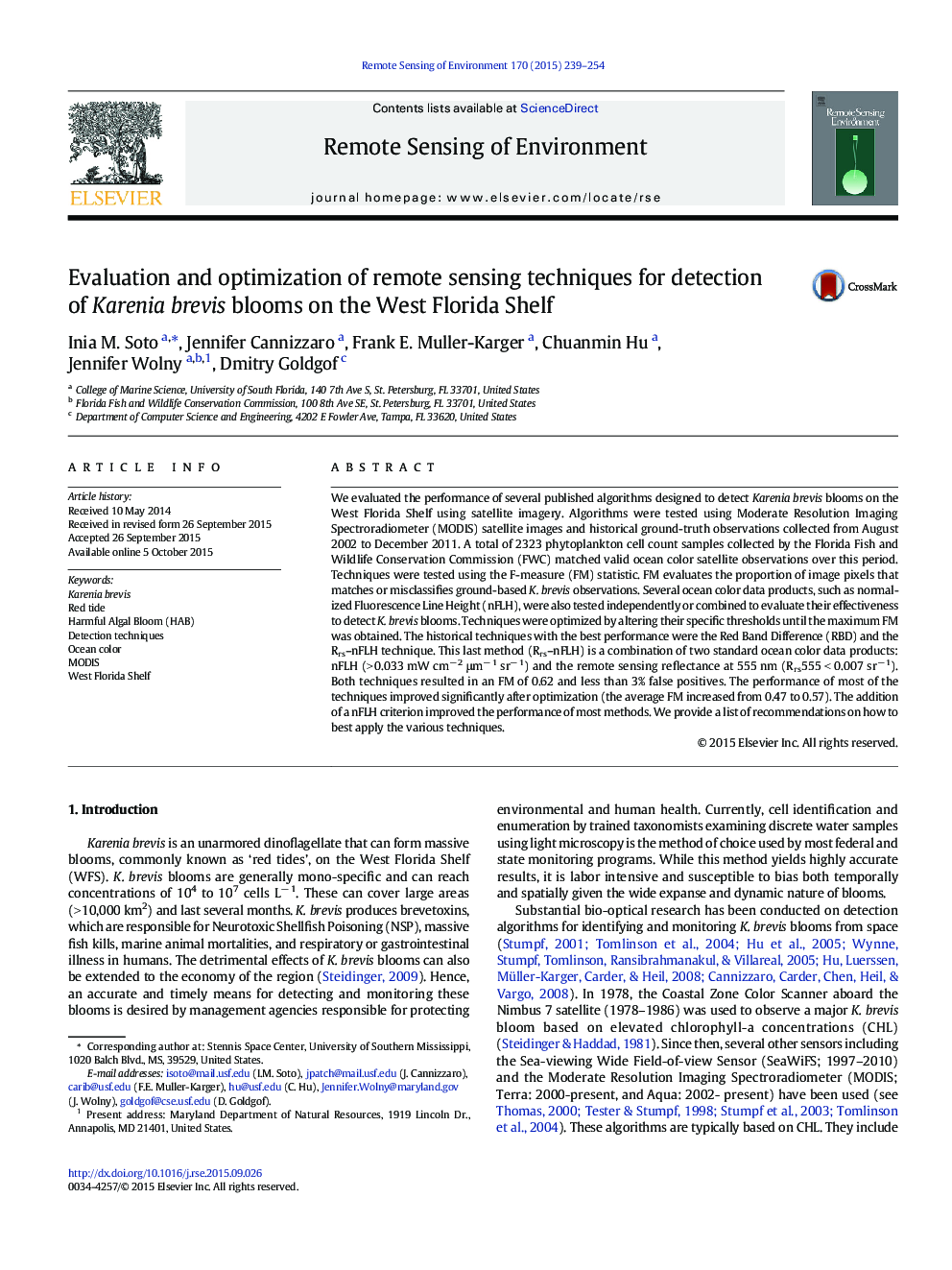| Article ID | Journal | Published Year | Pages | File Type |
|---|---|---|---|---|
| 6345523 | Remote Sensing of Environment | 2015 | 16 Pages |
â¢Objectives were to evaluate and optimize Karenia brevis detection algorithms.â¢Algorithms were evaluated using MODIS and in situ observations from 2002 to 2011.â¢Best performance was achieved using the optimized Red Band Difference technique.â¢Addition of MODIS Fluorescence Line Height data often improved algorithm performance.â¢A new practical detection technique using MODIS nFLH and Rrs555 data is suggested.
We evaluated the performance of several published algorithms designed to detect Karenia brevis blooms on the West Florida Shelf using satellite imagery. Algorithms were tested using Moderate Resolution Imaging Spectroradiometer (MODIS) satellite images and historical ground-truth observations collected from August 2002 to December 2011. A total of 2323 phytoplankton cell count samples collected by the Florida Fish and Wildlife Conservation Commission (FWC) matched valid ocean color satellite observations over this period. Techniques were tested using the F-measure (FM) statistic. FM evaluates the proportion of image pixels that matches or misclassifies ground-based K. brevis observations. Several ocean color data products, such as normalized Fluorescence Line Height (nFLH), were also tested independently or combined to evaluate their effectiveness to detect K. brevis blooms. Techniques were optimized by altering their specific thresholds until the maximum FM was obtained. The historical techniques with the best performance were the Red Band Difference (RBD) and the Rrs-nFLH technique. This last method (Rrs-nFLH) is a combination of two standard ocean color data products: nFLH (> 0.033 mW cmâ 2 μmâ 1 srâ 1) and the remote sensing reflectance at 555 nm (Rrs555 < 0.007 srâ 1). Both techniques resulted in an FM of 0.62 and less than 3% false positives. The performance of most of the techniques improved significantly after optimization (the average FM increased from 0.47 to 0.57). The addition of a nFLH criterion improved the performance of most methods. We provide a list of recommendations on how to best apply the various techniques.
